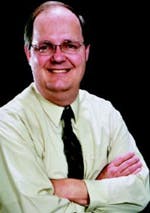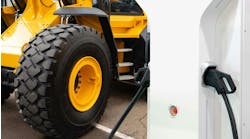On October 31, I moderated a panel discussion on reliability testing of hydraulic components. I had never moderated a panel discussion before, so I had visions that my role would be to keep discussions from becoming too heated. Needless to say, the discussion among the panel and audience was friendly, informative, and interesting.
This particular meeting was part of SAE's 2006 Commercial Vehicle Engineering Congress and Exhibition, held October 31 through November 2 at the Stephens Convention Center in Rosemont, Ill. I was told that SAE launched the Commercial Vehicle Conference and Expo in 2004 as a way of revitalizing its SAE Truck & Bus Conference and resurrecting the SAE Off-Highway Conference & Exposition. The intent is to strengthen participation in both fields by bringing everyone together at one event. Early signs indicate that efforts are paying off.
Anyway, the panel discussed test procedures, documentation, results, and future requirements of reliability testing of hydraulic components. For example, John Berninger, Parker Hannifin consultant and chairman of ISO's Technical Committee 131, outlined a test for hydraulic cylinder reliability. Citing piston rod seal wear as perhaps the most prevalent type of hydraulic cylinder failure, Berninger described a test fixture (developed by Lido Boni at Parker's cylinder division) that has two separate rod seals, and a piston rod is driven externally through the seals while pressure is cycled. Seven of these fixtures are made, and the test rods are all driven at the same time to simulate accelerated seal wear.
Other experts among the panel included Leonard Bensch, Ph.D., VP of Pall Corp., and a former member of NFPA's board of directors; Stan Meitzner, R&M specialist with MAG Powertrain; and Larry Horning, manager of technical maintenance at Waste Management Inc. Panelists and audience members discussed the objectives of the tests, test procedures, limitations of the tests, and, especially, the need for tests on more components.
Audience members expressed the need to classify the test conditions with different environments. One of the challenges pointed out by manufacturers is that subjecting a cylinder to constant abuse (side loading) until failure may be informative in tough outdoor applications, but not as useful in protected indoor applications.
One audience member pointed out that all the testing in the world does nothing to improve component reliability. However, if and when reliability standards do become a reality, they will serve as a minimum standard that similar components should meet. And everyone seemed to agree that the program is a step in the right direction.


